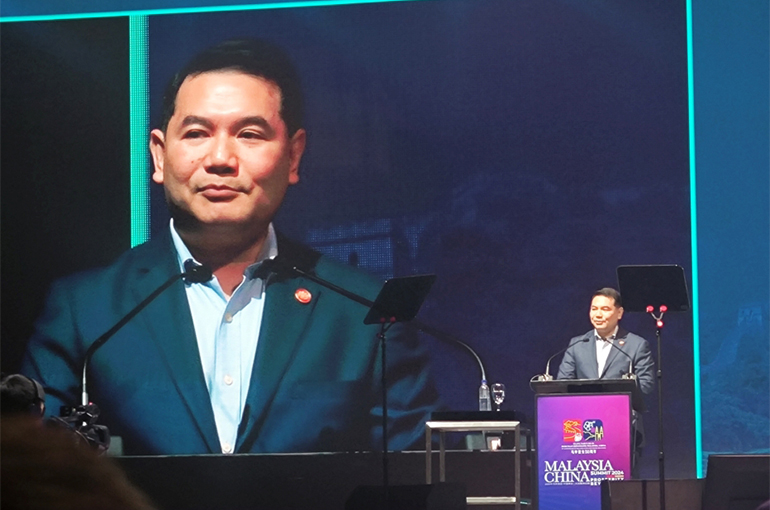 China-Malaysia Relations Transcend Mere Economics, Minister Says
China-Malaysia Relations Transcend Mere Economics, Minister Says(Yicai) Jan. 3 -- "The relationship between China and Malaysia, as well as with the Association of Southeast Asian Nations at large, goes beyond trade and the economy, dollars and cents," said Malaysia’s Minister of Economy recently, noting it extends into technological collaboration, innovation and cultural ties.
The partnership between China and Malaysia transcends mere economics, Rafizi Ramli said at the recent Malaysia-China Summit. China and Malaysia are neighbors not only geographically, but also in history, culture and even in kinship. "The relationship has been built over many years and it is a result of the kind of cultural and historical kinship that we have.”
Malaysia assumes the ASEAN chairmanship this year. Its economic strategy for 2025 will be guided by the three main principles of breakthrough development, good neighbor policy and thinking beyond trade, Ramli said.
"History has proven that innovation is faster through open collaboration with others," Ramli said. “Malaysia must transform its foreign direct investment model from one that focuses on tax incentives and cheap labor, to one that emphasizes technology transfer and indigenous innovation,” he added.
Malaysia is placing increasing emphasis on emerging industries such as green technology, new energy and artificial intelligence, Yicai learned at the Summit.
The minister was impressed by China’s strong startup mentality and infectious, entrepreneurial can-do spirit when he visited five Chinese cities, namely Hangzhou, Suzhou, Shanghai, Beijing, and Dalian, last year
“Working with China on innovation is essential for southeast Asia to become a consumption power house,” he said. The region has a middle class population that is predicted to reach 250 million people in two decades’ time.
The good neighbor policy is an important one for Malaysia. “Your neighbor’s efficiency is good for you, and the closer and better neighbors you become, the more resilient your supply chain will be in the long run,” said Ramli, citing the semiconductor and renewable energy supply chains as examples.
ASEAN and China are each other's top trading partners and trade has been growing at an exponential rate over the past decade. Trade between China and Malaysia was worth USD200 billion last year, up from USD200 million when diplomatic relations were established in 1974.
Looking ahead to 2025, Ramli said he holds thoughtful, calculated and confident optimism about the future of Malaysia-China relations. History has taught us that being creative is always about opening up possibilities beyond your import export numbers, he added.
Editor: Kim Taylor